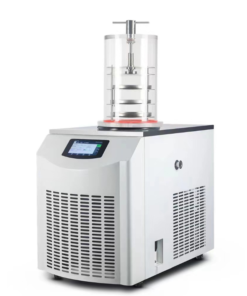Vacuum Freeze Drying
Vacuum freeze drying is a technique used to preserve perishable substances like food, pharmaceuticals, and biological samples. It involves three main steps: freezing, primary drying, and secondary drying.
How it works:
- Freezing: The product is frozen at a low temperature, typically below -40°C.
- Primary Drying (Sublimation): The frozen product is placed in a vacuum chamber. Under low pressure, the ice in the product sublimates directly into water vapor, bypassing the liquid state.
- Secondary Drying (Desorption): Any remaining moisture is removed by increasing the temperature slightly while maintaining the vacuum.
Advantages of Vacuum Freeze Drying:
- Preservation of Quality: It helps preserve the original color, flavor, and nutritional value of the product.
- Long Shelf Life: The process significantly extends the shelf life of products.
- Reduced Weight: The final product is lightweight due to the removal of water.
- Rehydration: The freeze-dried products can be easily rehydrated to their original state.
Applications of Vacuum Freeze Drying:
- Food Industry: Preserving fruits, vegetables, and meat.
- Pharmaceutical Industry: Preserving drugs and vaccines.
- Biological Research: Preserving cells, tissues, and microorganisms.
- Cosmetic Industry: Preserving skincare products.
Vacuum freeze drying is a valuable technique for preserving a wide range of products, ensuring their quality and longevity.

